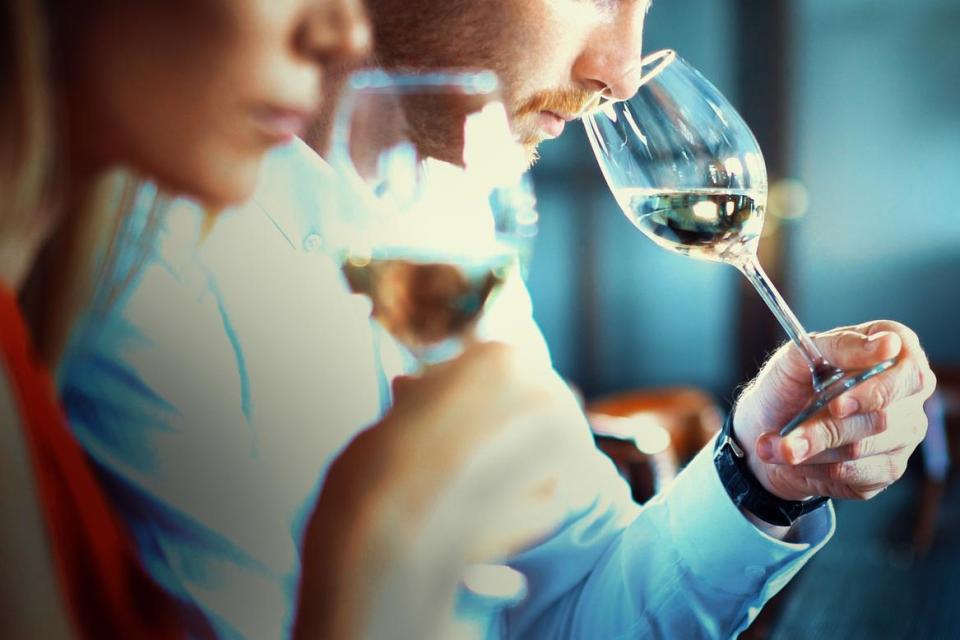Can a trip to Bordeaux turn a wine bluff into a wine buff?
Thirty-six hours into my vineyard voyage and I’m a Bordeaux bloodhound, hoovering up every aroma and seamlessly naming what it is. Well, so long as it fits with the six stock phrases I’ve just learned. Forget just sniffing wines, on this tour I’m flaring my nostrils over American oak barrels, leather gloves, and even empty glassware. In Bordeaux the native vinos take tasting so seriously they check the glasses for traces of damp or detergent which might colour the taste.
I’m usually less choosy. The most frequent red stuff found at my lips is cranberry juice and my own experience of selecting wines is dumbly nodding while a waiter in an overpriced gastro pub pours me a taste. “Mmmm, very nice!” I hear myself saying cluelessly as my date rolls their eyes.
But all that was before I came on a SmoothRed Bordeaux Wine Experience, where I am assured that my total ignorance shouldn't hold me back. The first part of knowing wine is looking the part when you taste. At Chateau du Tertre, a thousand-year-old estate, I’m instructed to tilt my glass over a napkin so I can study it’s reflected colour – the notes of orange in the hue show the age – then breathe in my “first nose”. This is where you inhale the bouquet with a still glass just to take in the top notes: dramatic nostril flaring optional. Next you swirl the glass to aerate the wine and release all of its other aromas.

As a previous cynic, I’m amazed at how much difference this two step inhaling makes. Suddenly, with my nose in a glass of 2005 Chateau du Tertre, I’m getting notes of jammy fruit, plums and a hint of cinnamon alongside the seared shrimps starter. Taking time to fully tune your senses in the French countryside becomes a meditative experience. In my daily life of desk dinners, working late and food on the go, the uniqueness of smelling, tasting and analysing everything you put in your mouth awakens a world of sensuality. It’s a joy to study my own reactions to quality wines and how - once I’m not being watched by guffawing dinner party guests or impatient waiters – I pick up lots of little traces unprompted.
The wide vineyards spread like pages away from dividing white roads, full of stories about each different chateau. At Chateau Guadet, we are taught how the owners – descendants of the Petrus dynasty - stayed true to their wine heritage despite most of their relatives losing their heads in the French revolution. It sits in St Emilion, a Unesco world heritage site dating back to when a monk settled in the area in the 8th Century. At nearby Margaux, Chateau du Tertre, perhaps the most beautiful vineyard I visit, was redesigned by an enterprising Irishman on the run from religious persecution in Britain. Elsewhere, Chateau Paloumey is a revived 1950s vineyard saved from a dreary life as a tennis court when the enterprising Cazeneuve family put down roots there.
I am introduced to wine blending at Chateau Paloumey, managing the ungainly mess of pipetting wine from glass to glass to get just the right blend of Cabernet Sauvignon backbone and fruity Merlot. The host – Pierre Cazeneuve – is fun and candid around his guests. “Making wine is like making jam, it is growing beautiful fruit that is the hard part,” he says, ruing losing 40 per cent of this year’s crop in a single night’s frost.
I do learn it’s unwise to ask too much about vineyard rules. No irrigation is allowed on any vineyard – if your crops fail through lack of rain, tough – and no new grapes can ever be introduced here. A good way to annoy a winemaker is to ask why any of these rules matter. I stop doing it after the first few irritated looks.

Still, in amongst my heavy-handed questioning, I’m delighted to discover I really am learning something new in each fresh tasting. It’s only when you follow the journey of the grapes from soil to barrel that you start to spot the subtle notes in the wines. I learn different oak barrels provide different scents – American gives coconut, British oak gives vanilla or burnt sugar. Each terroir – the unique micro environment the vine grows in – can give varied results even within a 20-metre range.
By each evening, I’m wafting in and out of heady naps in the car as our SmoothRed wine guide ferries us back to the hotel. In my wooziness, I contemplate how in just four days I’ve gone from wine ignoramus to the kind of person who sticks their nose into a verre du vin for quite some time before drinking it, while waxing lyrical about the notes of blackberry and tannin. Wine connoisseur? Not quite yet, but I’m definitely on my way.
Travel essentials
Getting there
EasyJet, KLM, British Airways and Air France fly direct from London or Birmingham to Bordeaux. A new Eurostar route from London to Bordeaux (five hours and 55 minutes) is available from July.
Staying there
Andy was a guest of SmoothRed (0208 877 4940; smoothred.co.uk) and Intercontinental Bordeaux – Le Grand Hotel (+33 (0)557 30 44 44; intercontinental.com/bordeaux). SmoothRed offers a variety of trips to Bordeaux. For example, the four-day Bordeaux Wine Experience – Saint-Émilion & Médoc features a wine-tasting on the first day, two chauffeur-driven day tours with English-speaking guide to prestigious classified growth and Grand Cru Classé chateaux, and free time to explore the city of Bordeaux. From £548 per person, including return flights and three nights’ accommodation, B&B, in a three-star hotel.
More information
Château Paloumey (chateaupaloumey.com); Chateau du Tertre (chateau-giscours.fr); Château Guadet (chateau-guadet-saintemilion.com).


